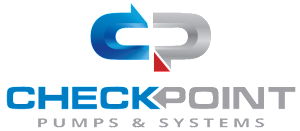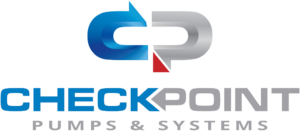What is the Functionality Behind Liquid Pumps in Modern Industries
In contemporary industrial applications, the functionality of liquid pumps is pivotal for ensuring efficiency and reliability in the transportation of fluids. According to a recent market analysis report by Research and Markets, the global liquid pump market is expected to reach $70 billion by 2025, reflecting a compound annual growth rate (CAGR) of 7.5% from 2020 to 2025. This growth is driven by the increasing demand for liquid pumps across various sectors, such as oil and gas, chemical processing, and water management. Liquid pumps play a crucial role in facilitating processes ranging from the extraction of resources to the effective management of wastewater. Understanding the underlying mechanics and applications of these pumps is essential for industries aiming to improve operational performance and sustainability.

Understanding the Basics of Liquid Pump Technology in Industrial Applications
Liquid pumps play a crucial role in modern industries, serving as essential components for transporting fluids in various applications. Understanding the basics of liquid pump technology is vital for optimizing operations and ensuring efficiency. These pumps vary in design and functionality, including centrifugal, positive displacement, and diaphragm pumps, each suited for different types of liquids and operational requirements. Centrifugal pumps utilize rotational energy to move fluids, making them ideal for high-flow operations, while positive displacement pumps are better suited for applications requiring consistent flow rates against high pressures.
In addition to their design, the selection of materials for liquid pumps is critical. Industries often deal with aggressive chemicals, varying temperatures, and specific cleanliness standards, necessitating pumps made from corrosion-resistant and durable materials. Understanding the specific characteristics of the liquid being pumped, such as viscosity and temperature, is essential for choosing the right pump type and material. This knowledge not only enhances performance but also extends the lifespan of the equipment, resulting in lower maintenance costs and improved reliability in industrial settings.
What is the Functionality Behind Liquid Pumps in Modern Industries
| Application Area | Pump Type | Flow Rate (L/min) | Pressure Range (bar) | Material Compatibility |
|---|---|---|---|---|
| Chemical Processing | Diaphragm Pump | 10-100 | 1-7 | Acids, Bases |
| Food and Beverage | Gear Pump | 5-200 | 2-10 | Vegetable Oils, Juices |
| Water Treatment | Centrifugal Pump | 50-1500 | 1-5 | Water, Sewage |
| Pharmaceuticals | Peristaltic Pump | 1-50 | 0.5-2 | Sterile liquids |
| Oil and Gas | Positive Displacement Pump | 20-300 | 5-20 | Crude Oil, Viscous Fluids |
Different Types of Liquid Pumps and Their Roles in Modern Industries
Liquid pumps play a pivotal role in modern industries, serving various sectors from agriculture to energy management. One notable type is the peristaltic pump, which is increasingly popular due to its versatility and efficiency. The peristaltic pump market is projected to reach USD 2.38 billion by 2030, reflecting a growing demand for reliable fluid handling solutions. Its design allows for gentle transportation of liquids, making it ideal for applications that require careful handling, such as in the food and pharmaceutical industries.
Moreover, the intelligent pumps market is also on the rise, driven by the need for energy-efficient solutions across multiple sectors. These smart pumps are equipped with advanced technology that optimizes fluid dynamics, enhances operational efficiencies, and integrates seamlessly with existing infrastructure. As industries strive to reduce energy consumption and minimize their carbon footprint, the adoption of intelligent pumps becomes crucial, paving the way for sustainable practices and improved productivity. This focus on innovation within the pump sector not only supports growth in various markets but also contributes to the broader goal of sustainability across industries.
Key Components and Mechanics Behind Efficient Liquid Pump Operation
Liquid pumps play a critical role in various modern industries, from pharmaceuticals to food and beverage manufacturing. Understanding the key components that contribute to their efficient operation is essential for optimizing production processes. The primary components include the pump casing, impeller, motor, and seals. The pump casing houses the liquid, while the impeller creates the necessary suction and pressure to move the liquid. Motors drive the impeller, and seals ensure no leakage occurs during operation.
To achieve optimal performance, it's vital to regular maintenance on these components. **Tip:** Routinely check and replace seals to prevent leaks, which can lead to significant losses in both materials and safety. Additionally, ensuring that the motor is appropriately lubricated can extend its lifespan and maintain efficiency.
Another important aspect of liquid pumps is the choice of pump type, whether centrifugal or positive displacement, depending on the application requirements. **Tip:** Always assess flow rate and pressure requirements before selecting a pump type; this ensures that the system operates under optimal conditions. Proper understanding of these mechanics can lead to improved reliability and efficiency in industrial operations.

Factors Influencing Liquid Pump Performance and Selection Criteria
Liquid pumps play a pivotal role in various modern industries, from chemical manufacturing to water treatment. The performance of these pumps is influenced by several critical factors. One significant element is the pump type; for example, positive displacement pumps are known for their efficiency in handling viscous liquids, while centrifugal pumps are preferred for their high flow rates in low-viscosity applications. According to a recent market analysis by Allied Market Research, the global liquid pump market is projected to reach $56.6 billion by 2027, indicating a growing demand for efficient and reliable pumping solutions.
Another crucial factor in pump performance is the operating conditions, including temperature and pressure, as these can significantly impact efficiency and lifespan. A study from the Hydraulic Institute reveals that optimizing pump selection can improve energy efficiency by up to 30%. Additionally, compatibility with specific fluids is essential; materials must resist corrosion and wear based on the chemical properties of the liquids being pumped. Selecting the right pump involves detailed consideration of these elements to ensure operational success and cost-effectiveness in any industrial application.

Innovations and Future Trends in Liquid Pump Engineering and Design
Innovations in liquid pump technology have seen significant advancements over the past few years, driven by the need for increased efficiency and adaptability in various industries. One remarkable trend is the development of smart pumps equipped with IoT (Internet of Things) capabilities. These pumps utilize sensors and data analytics to monitor performance in real-time, allowing for proactive maintenance and minimizing downtime. This level of connectivity is reshaping how industries approach pump management, making processes more reliable and efficient.
Another critical innovation is the design of energy-efficient pumps. As industries face growing pressure to reduce their environmental impact, engineers are focusing on creating pumps that consume less energy while delivering optimal performance. Advances in materials and design, such as the use of composite materials and advanced hydraulic modeling, have led to pumps that can handle a wider range of fluid types and operating conditions. These innovations not only help lower operational costs but also align with sustainability goals, paving the way for greener industrial practices. The future of liquid pump engineering promises even more breakthroughs, as researchers and engineers continue to push the boundaries of what's possible.
Liquid Pump Market Trends and Innovations
Related Posts
-

7 Essential Tips for Choosing the Right Chemical Diaphragm Pump
-

Evaluating Cost-Effectiveness: A Comparative Analysis of Pump Rentals vs. Purchasing Equipment
-

Unveiling the Best Chemical Pumps: A Comprehensive Comparison Guide
-

7 Reasons Why Electric Diaphragm Pumps Are Your Top Choice for Efficient Fluid Management
-

7 Essential Tips for Choosing the Right Diaphragm Pump for Your Business Needs

Whether your solution requires a single pumping application or an expansive engineered system,
CheckPoint is committed to becoming your partner in excellence.



